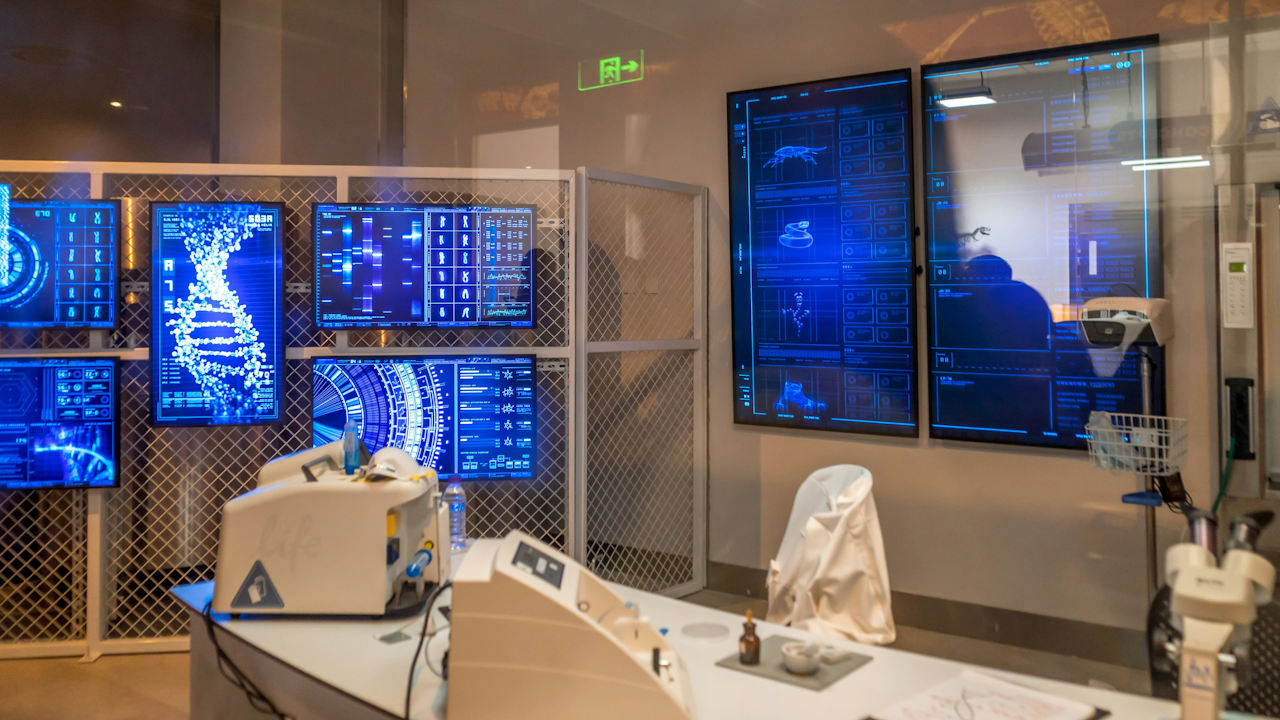Synthetic biology is a field of science that applies engineering principles to biology. It involves designing and constructing new biological parts, devices and systems, as well as redesigning existing natural biological systems for useful purposes. At its core, synthetic biology aims to make biology more predictable, programmable and controllable, much like how engineers work with electronics or software.
The Core Principles and Concepts
The foundation of synthetic biology rests on several key engineering concepts: standardization, modularity and abstraction.
- Standardization: In engineering, components are often standardized to ensure they work together seamlessly. Similarly, synthetic biologists are working to create a library of standardized biological parts, or “BioBricks,” that can be easily assembled. These parts could be anything from a promoter (a DNA sequence that initiates transcription) to a coding sequence for a protein.
- Modularity: This principle involves building complex systems from smaller, independent modules. In synthetic biology, a biological system might be broken down into individual genetic circuits, each with a specific function. For example, one module might sense a chemical, another might process that signal and a third might produce a desired output, like a therapeutic protein.
- Abstraction: This concept allows engineers to focus on the function of a component without needing to understand its underlying complexity. A biologist using a standardized BioBrick part, for instance, doesn’t need to know the specific DNA sequence of every part in the system. They can simply focus on how the parts fit together to achieve a desired outcome.
A Toolbox of Techniques
Synthetic biology employs a range of molecular and computational tools to manipulate and create biological systems.
- Gene Synthesis: This is the process of creating artificial DNA sequences from scratch. Rather than cutting and pasting existing DNA, scientists can design and order custom DNA to build new genetic circuits. This capability is fundamental to building novel biological systems.
- CRISPR-Cas9: While not unique to synthetic biology, the CRISPR-Cas9 system has revolutionized the field. It acts as a precise genetic “scissors” that can be programmed to cut DNA at specific locations, allowing for the easy editing or insertion of new genetic material into a cell’s genome.
- Computational Design: Before any wet lab work begins, synthetic biologists use sophisticated software to design their genetic circuits. These tools can model how a system will behave, predict potential interactions and optimize the design to ensure it functions as intended. This in silico design phase is crucial for reducing trial and error.
Applications: Building a Better World
The applications of synthetic biology are vast and transformative, spanning medicine, energy, agriculture and the environment.
- Medicine: Synthetic biology is being used to engineer microorganisms, like bacteria or viruses, to serve as “living drugs.” For example, researchers are creating engineered bacteria that can live in the gut and produce therapeutic molecules to treat diseases such as Crohn’s disease or colon cancer. Other applications include developing novel vaccines and designing cells that can detect and destroy cancer cells.
- Biofuels and Chemicals: By reprogramming microorganisms, scientists can turn them into miniature factories. Engineered microbes can consume waste biomass and produce biofuels like ethanol or sustainable chemicals for plastics, textiles and pharmaceuticals, offering a greener alternative to traditional fossil fuel-based production.
- Agriculture: Synthetic biology can enhance crop resilience and nutrition. Researchers are working on engineering plants to be more resistant to drought, pests and diseases. Another goal is to create crops that can fix their own nitrogen, reducing the need for synthetic fertilizers which have significant environmental impacts.
- Environmental Remediation: Engineered microbes can be used to clean up pollution. For example, bacteria can be designed to break down oil spills or to detect and neutralize heavy metals in contaminated soil and water.
The Road Ahead: Challenges and Ethical Considerations
While the potential of synthetic biology is immense, the field also faces significant challenges and ethical questions.
- Safety and Biosecurity: The ability to create new life forms raises concerns about their accidental or malicious release. Rigorous safety protocols and biosecurity measures are essential to prevent the misuse of this technology.
- Ethical and Societal Implications: As synthetic biology becomes more powerful, we must grapple with ethical questions. What are the implications of creating organisms with entirely new functions? How do we ensure equitable access to these technologies and prevent them from being used for purposes that could harm society or the environment?
- Predictability and Complexity: Despite advances in computational modeling, living systems are incredibly complex and often behave in unpredictable ways. A genetic circuit that works perfectly in a test tube might not function as expected when placed inside a living cell, due to the cell’s intricate internal environment.
Synthetic biology stands at the intersection of engineering and biology, promising a future where we can program life itself to solve some of our most pressing problems. As the tools become more sophisticated and our understanding of biological systems deepens, this field will continue to revolutionize how we interact with the living world.

